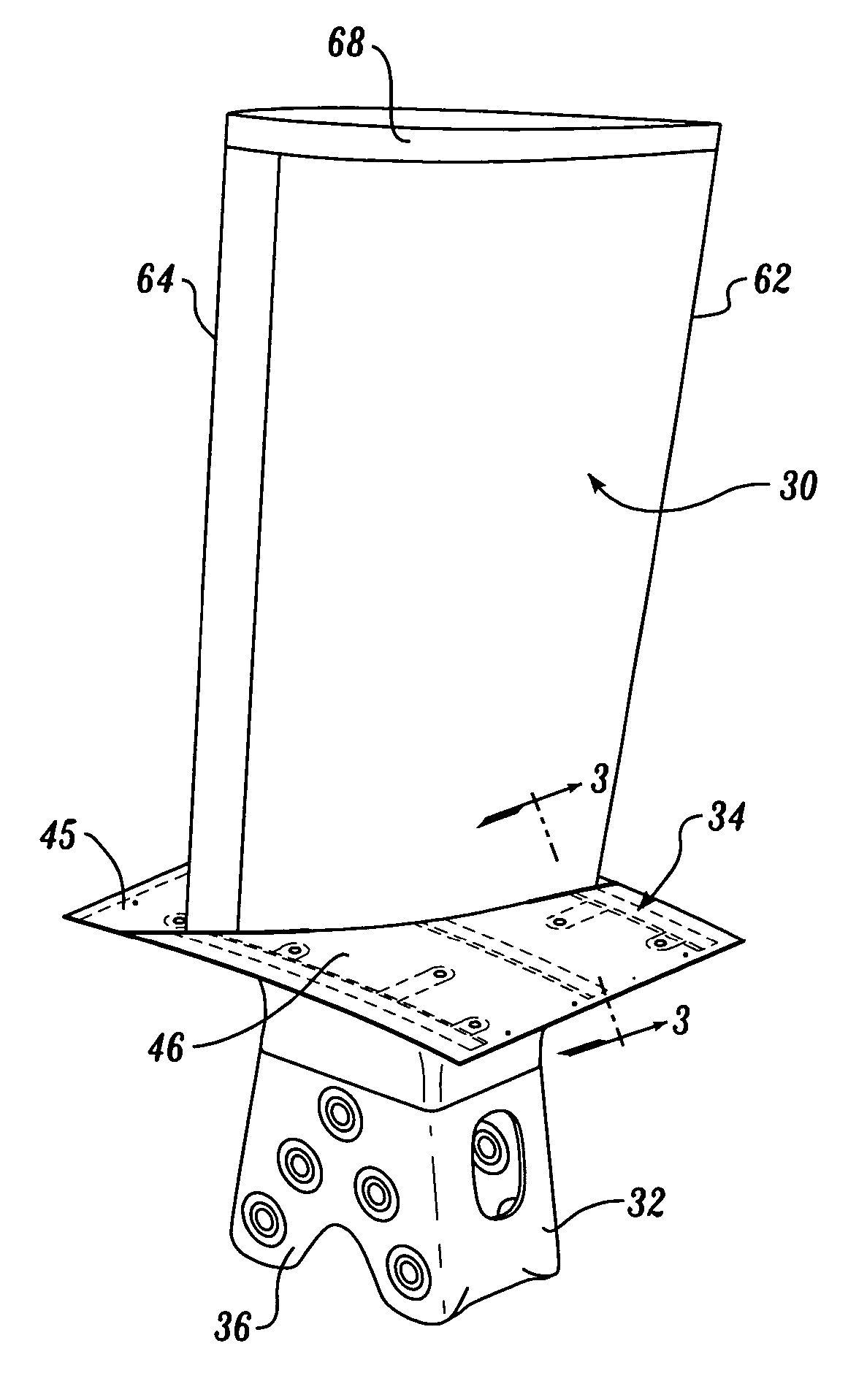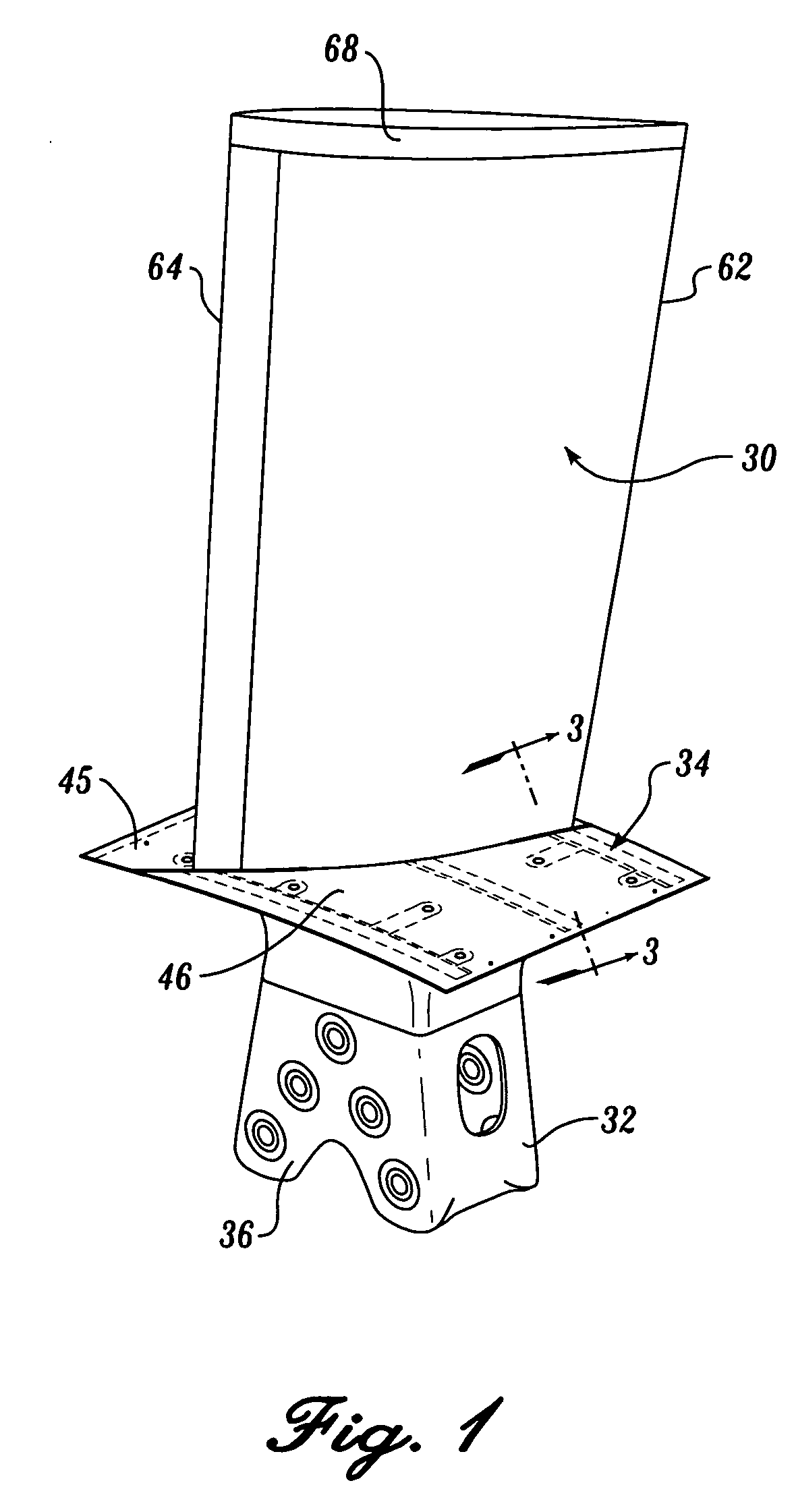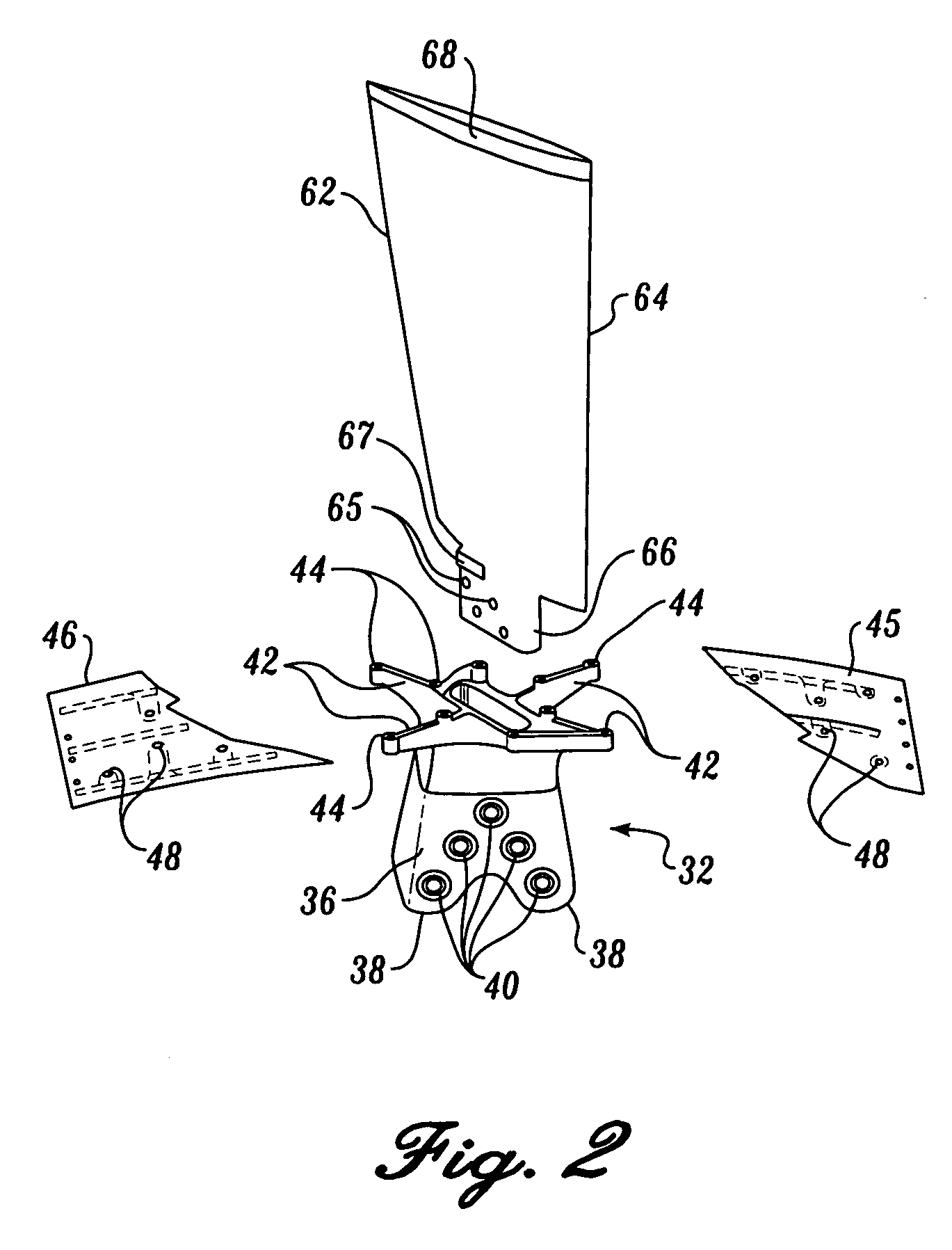Resin transfer molding process
a technology of resin transfer molding and resin injection, which is applied in the direction of transportation and packaging, manufacturing tools, and other domestic objects, can solve the problems of low initial capital investment cost of resin transfer molding, and inability to properly design the tool to tak
- Summary
- Abstract
- Description
- Claims
- Application Information
AI Technical Summary
Benefits of technology
Problems solved by technology
Method used
Image
Examples
Embodiment Construction
[0076] Referring now to the drawing, in which like reference numerals represent like parts throughout the several views, FIG. 1 shows a wind tunnel blade 30 made in accordance with the present invention. The wind tunnel blade 30 is connected to a base 32 and is held in position by a two-piece cuff 34.
[0077] Briefly described, the present invention is directed to the separate wind tunnel blade 30, base 32 and cuff 34 system, and the unique configuration and structure of the wind tunnel blade 30. In addition, the present invention is directed to resin molding transfer processes for forming the wind tunnel blade 30.
[0078] The base 32 is designed to be attached to a hub of a wind tunnel fan (not shown). A plurality of the wind tunnel blades 30 project radially outward from the hub and are supported therefrom in a conventional fashion at the base 32. Any number of wind tunnel blades 30 can be used with the wind tunnel fan. As a nonlimiting example, the wind tunnel blade 30 shown in FIG. ...
PUM
 Login to View More
Login to View More Abstract
Description
Claims
Application Information
 Login to View More
Login to View More - R&D
- Intellectual Property
- Life Sciences
- Materials
- Tech Scout
- Unparalleled Data Quality
- Higher Quality Content
- 60% Fewer Hallucinations
Browse by: Latest US Patents, China's latest patents, Technical Efficacy Thesaurus, Application Domain, Technology Topic, Popular Technical Reports.
© 2025 PatSnap. All rights reserved.Legal|Privacy policy|Modern Slavery Act Transparency Statement|Sitemap|About US| Contact US: help@patsnap.com



